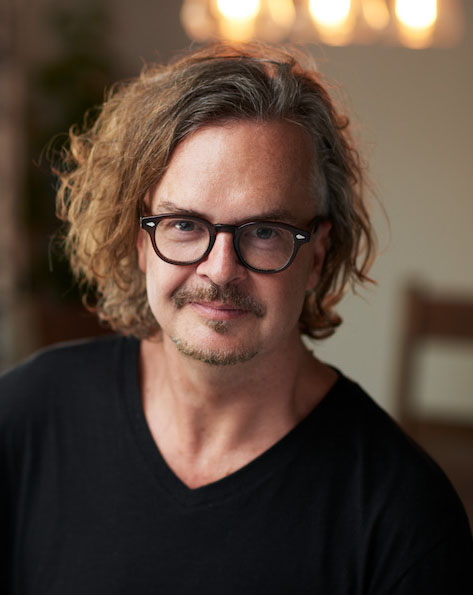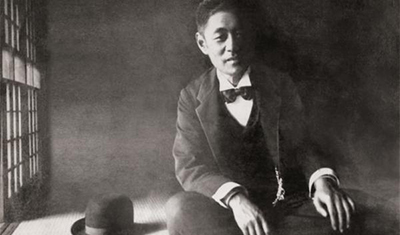
On Tuesday, Feb. 6, Wesleyan’s Social, Cultural, and Critical Theory program hosted New York University (NYU) Visiting Associate Professor Robert Stolz for a lecture in Downey House. In the talk, Stolz discussed Japanese philosopher Tosaka Jun and Stolz’s work as an editor for the book “Tosaka Jun: A Critical Reader.”
Introducing the event was Associate Professor of English Matthew Garrett, who is also the Coordinator for the Social, Cultural, and Critical Theory Certificate. Garrett began the lecture by commenting on Stolz’s book, “Bad Water: Nature, Pollution, and Politics in Japan 1870-1950.”
“[Stolz’s] work is relentlessly and breathlessly dialectical,” Garrett said. “It is a moment from the end of the book where he concludes with a historically based re-theorization of the relationship between nature and capitalism. And it is a very ambitious 10 pages. It’s really tightly argued.”
Stolz’s presentation related to his ongoing project of translating the philosopher’s writings in his 1935 book, “The Japanese Ideology.” He began by addressing a current debate between historians, sociologists, and citizens alike: Was Japan fascist during the 1930s and 40s?
“The majority of the major powers in Japanese studies believe Japan was not fascist,” Stolz said. “I and Tosaka hold that it was. Luckily, only one of us is right.”
Stolz explained that fascism has been notoriously difficult to define. Due to this ambiguity, Japan’s past with fascism is often dismissed or disavowed. Stolz posited that the translation of Jun’s work provides a more cohesive definition of fascism, which includes Japan’s history, and comments on the relevance of Jun’s work in the modern day.
“This text has long been considered his masterpiece and it is a famous example of Japanese intellectual history,” Stolz said. “But it is much more often invoked and referred to then read.”

With the untapped resource of “The Japanese Ideology” at the forefront of Stolz’s research and discovery, he discussed the primary critiques presented in Jun’s work. There are two main subjects that Jun criticizes: Japanism (a term coined by Jun to represent Japan’s own breed of fascism) and liberalism.
“Tosaka claims that liberalism and fascism share deep affinities,” Stolz explained. “A metaphysics of culture…and a particular way in which, what Tosaka calls, the ‘actual historical world’ is related to the ‘spirit.’ Here he glosses ‘spirit’ as ‘culture’ in the text.”
Stolz provided an example of how to utilize Jun’s critiques and theorizations about history in a contemporary situation: the 2017 rally of white supremacists in Charlottesville, Va., that resulted in the death of one counter-protester after she was hit by a car.
“I came from, today, NYU, but prior to that, I was at University of Virginia,” Stolz said. “My apartment is actually on the corner where the car attack happened. You can actually see it in some of the video…. After that event, the History Department scheduled a teach-in…on fascism. And they wanted to critique the rally below the statue of Robert E. Lee. But it didn’t amount to anything besides pointing out the statue wasn’t built in 1865…. It was built in 1920. And therefore it wasn’t exactly what you thought. It was built in 1920, as if historical criticism meant nothing more than assigning every event to its proper spot on a linear time frame.”
According to Jun, as Stolz points out, the conversations surrounding the attack would be dramatically different when using Jun’s ideology surrounding historical time. Stolz argues that Jun would analyze the rally within a broader context rather than looking at the event in isolation.
“Instead, what should have been the historical question was: what could the ideological content of rallying around a statue of Lee after the Civil War, after the 1920s, after World War II, after Jim Crow, after the Civil Rights Movement—what does it mean there?” Stolz asked.
For Stolz, this line of thought leads to a new conclusion in the prominent debate over removing symbols like statues of Confederate generals, which are typically chalked up to either erasure or the necessary removal of symbols of hate.
“Should we erase history or should…it just be noted as a heritage?” Stolz asked. “There’s a third choice. And that is history can be judged, today, according to the multiple deployments that show up here. We don’t have to accept or forget, that is a false dichotomy.”
Jun’s notion of fascism, called Japanism, has a distinct identity that is inherent to “Japanese-ness,” harboring a Japanese essence that gives it room for contradiction and nuance. Stolz asserts that the theory surrounding Japanism gives scholars the ability to understand what fascism really means in all of its complexity.
“Here, with fascism, the past is not brought into the present as a moment of redemption and possibility, but the present is dragged back into the past, where it is left to stagnate and die,” Stolz said. “In sum, fascism was able to emerge from late liberalism because they were both idealistic logics and cultures from the start.”
Stolz ended the talk with a narrower definition of fascism that Jun formulated, an idea that, as he told the audience, he had not spoken aloud before at any other talks.
“Fascism is the disavowed repetition of the violence of primitive accumulation within the capitalist question,” Stolz said. “Or, put in another way, fascism is the return of the repressed violence of liberalism’s capitalist past.”
Jordan Saliby can be reached at jsaliby@wesleyan.edu.


Leave a Reply